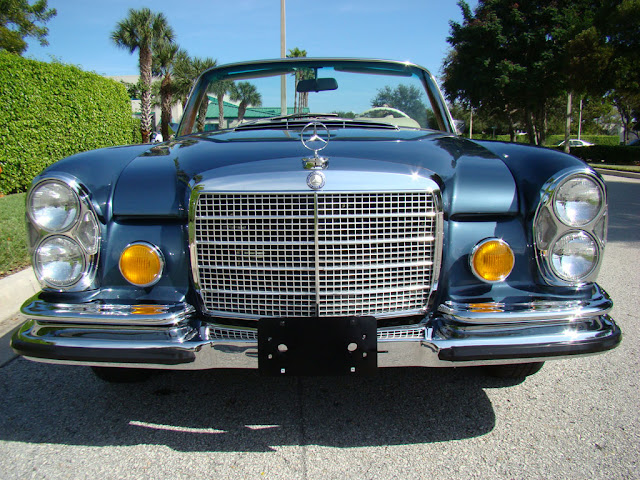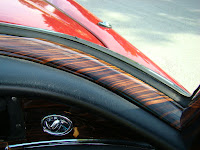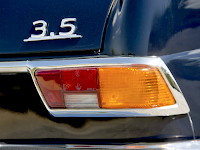With "Fintails" being passé and dropped, the updated and larger Mercedes-Benz W108/ W109 lines were introduced in 1965. With the W108/ W109 series, the range received V8 power for the first time (from 1969). The W108 line, which included the 250S, 250SE, 280S 280SE and 280SEL models, was larger than the Fintail models it replaced, and also eliminated the characteristic design feature of the previous model. .
During this period, the designation S or SE was used for short-wheelbase models including 250S, 250SE, 280S, 280SE and 300SE. The "E" stands for the German word "Einspritzung" which was a reference to the vehicle being equipped with fuel injection for the engine. Vehicles without the E designation as part of the model number or nomenclature retained the carburetor setup. Long-wheelbase models (extended by 10 centimeters in the rear doors) were designated SEL (L= lang or long).
In 1968, the W108 line dropped the 250SE in favor of the larger-engined 280S (in carbureted form) and the 280SE (with fuel injection). Engine displacement eventually increased from 2778 cc for the 280S and 280SE, to 3499 cc for the 280SE 3.5 and 280SEL 3.5 in 1970. The 4.5 litre version was offered from 1971 but only in the United States. The default transmission was the four-speed automatic. Buyers could opt for a four-speed manual box. On the 280S the two downdraft carburettors produced 170 hp (130 kW) at 5200 rpm and could push the car to 185 km/h (180 on auto), whilst 0-100 was done in 12.5 seconds. The fuel-injected 280SE delivered 160 hp (120 kW) at 5500 rpm. A top speed of 190 km/h (185 on auto) and a 0-100 acceleration in 10.5 seconds.
The standard 280SE sedan was far more popular with 91,051 examples produced as opposed to only 5187 examples of the coupe and convertibles. Part of the popularity was the price tag which was almost half the cost of the convertible option.
The standard 280SE sedan was far more popular with 91,051 examples produced as opposed to only 5187 examples of the coupe and convertibles. Part of the popularity was the price tag which was almost half the cost of the convertible option.
The W108/ W109 series was succeeded by the W116 in 1972, a car which brought a new household name for any car, the Mercedes-Benz S-class. The W108/ 109 lines were not available with four-cylinder engines, and thus established the distinct S-Class market position, consisting of I-6 and V-8 engines. Since the advent of the W108 series, the Mercedes-Benz S-Class has always included two wheelbase lengths, although not all wheelbases are sold in every country. (wikipedia)
(Photos from rmauctions.com & hemmings.com)
















































































































































